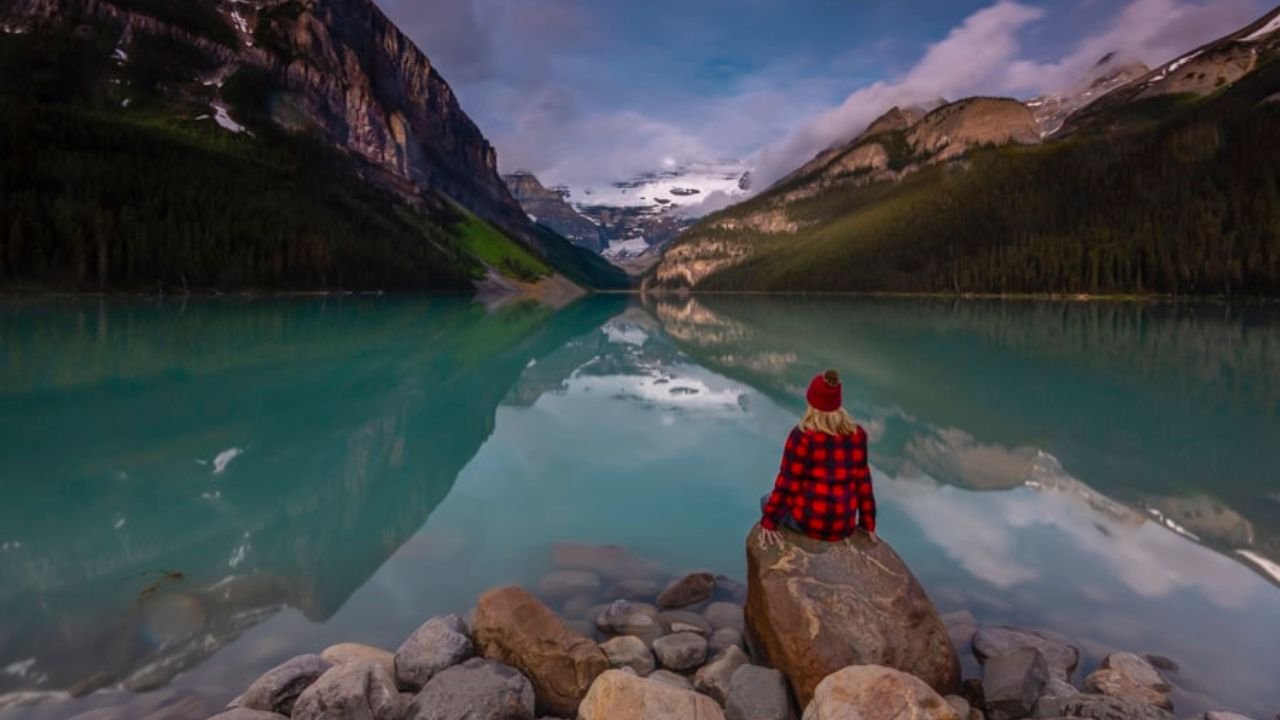Switzerland’s breathtaking landscapes, charming cities, and alpine regions make it a must-visit destination for travelers worldwide. Whether you’re planning a winter ski holiday, a summer hiking adventure, a city sightseeing trip, or a cultural exploration, packing appropriately is crucial to fully enjoy your experience.
This comprehensive guide will help you prepare for all eventualities, covering essentials for different seasons, activities, and regional variations, ensuring you arrive well-equipped, comfortable, and ready for your Swiss journey.
1. Understanding Swiss Climate and Seasons
Before packing, it’s essential to consider Switzerland’s diverse climate and seasonal variations. The country’s geography creates distinct weather patterns, influencing what you should bring.
1.1 Seasonal Overview
| Season | Months | Climate Features | Typical Activities |
|---|---|---|---|
| Winter | December – February | Cold, snowy in mountains, milder in cities, temperatures often below freezing | Skiing, snowboarding, winter festivals, cozy indoor activities |
| Spring | March – May | Gradually warming, unpredictable weather, snow melting in mountains | Hiking, city sightseeing, blooming gardens |
| Summer | June – August | Warm to hot, longer daylight hours, occasional thunderstorms | Hiking, lakeside activities, festivals |
| Autumn | September – November | Cooler temperatures, colorful foliage, variable weather | Wine tasting, hiking, cultural festivals |
1.2 Regional Variations
- Alpine Regions: Cold, snowy winter, cooler summers, high-altitude weather.
- Lowland Cities: Milder winters, warm summers.
- Lakeside Areas: Moderate climate, pleasant for outdoor activities.
- South (Ticino): Mediterranean influence, milder winters, hot summers.
2. General Packing Tips
- Layering: Swiss weather can change rapidly; pack clothes that can be layered.
- Versatility: Choose multi-purpose clothing suitable for various activities.
- Comfort: Prioritize comfortable footwear and breathable fabrics.
- Weatherproofing: Include rain gear and windproof items.
- Cultural Respect: Dress modestly and appropriately, especially when visiting religious sites.
- Weight & Space: Pack efficiently to avoid excess baggage, especially if traveling between regions.
3. Clothing Essentials
3.1 Base Layers
- Thermal Underwear: Essential for winter or high-altitude activities; lightweight, moisture-wicking fabrics like merino wool or synthetic blends.
- T-shirts & Long-sleeve Tops: For layering and everyday wear in warmer months.
- Casual Shirts & Blouses: For city outings and casual dinners.
3.2 Middle Layers
- Fleece or Sweaters: For insulation during cooler days or evenings.
- Light Down or Puffer Jackets: Compact and warm, ideal for winter and chilly mornings.
3.3 Outer Layers
- Waterproof Jacket: Breathable and windproof; essential in all seasons, especially spring and fall.
- Insulated Winter Coat: For winter trips, a waterproof and insulated coat is necessary.
- Rain Pants: Useful for outdoor activities in wet weather.
3.4 Bottoms
- Jeans & Casual Trousers: Suitable for city exploring.
- Hiking Pants & Trousers: Lightweight, quick-drying, and durable.
- Thermal Leggings: For cold weather or winter outdoor activities.
- Skirts & Dresses: For city life or indoor events, dress modestly when required.
3.5 Tops & Shirts
- Long-sleeve Shirts: For layering and cooler days.
- Short-sleeve T-shirts: For summer and indoor wear.
- Blouses & Dress Shirts: For dinners, cultural visits.
3.6 Underwear & Socks
- Thermal Socks: For winter and hiking.
- Wool or Synthetic Socks: For hiking and outdoor activities.
- Cotton Underwear: Comfortable daily essentials.
3.7 Footwear
- Walking Shoes: Comfortable, supportive sneakers or walking shoes for city exploration.
- Hiking Boots: Waterproof, sturdy, and broken-in.
- Casual Shoes: Sandals or loafers for casual outings or indoor use.
- Elegant Shoes: For upscale dining or events.
- Winter Boots: Insulated and waterproof for snow and cold.
3.8 Accessories
- Hats & Caps: Sun protection in summer, warmth in winter.
- Gloves: Insulated gloves for cold weather or winter sports.
- Scarves & Neck Gaiters: Protect against wind and cold.
- Sunglasses: UV protection for mountain sun and summer days.
- Swimsuit: For lakes, hotels with pools, or spa visits.
- Sleepwear: Comfortable pajamas suitable for climate.
4. Special Gear for Outdoor Activities
Switzerland’s outdoor attractions demand specific gear, depending on your planned activities.
4.1 Hiking & Trekking
- Hiking Boots: Sturdy, waterproof, and comfortable.
- Trekking Poles: Helpful on steep or uneven terrain.
- Daypack: Lightweight, with enough capacity for water, snacks, and layers.
- Navigation Tools: Map, compass, GPS device or smartphone with offline maps.
- Water Bottle: Reusable, insulated if possible.
- Sun Protection: Sunscreen, lip balm with SPF.
- Insect Repellent: Especially in summer.
4.2 Skiing & Snowboarding
- Base Layers: Thermal long underwear.
- Ski Socks: Thick, moisture-wicking.
- Ski Gloves & Mittens: Waterproof and insulated.
- Neck Warmer or Balaclava: To protect face from cold.
- Goggles: UV protection and clear vision.
- Helmet: For safety.
- Ski Jacket & Pants: Waterproof, insulated, and breathable.
- Avalanche Safety Gear: If skiing off-piste, including beacon, probe, and shovel.
4.3 Cycling & Mountain Biking
- Helmet
- Cycling Shorts & Jersey
- Gloves: Padded for comfort.
- Bike Lock & Repair Kit
- Lights & Reflective Gear: For safety.
4.4 Water Activities
- Swimsuit & Towel
- Waterproof Bag
- Snorkel & Mask: If snorkeling.
- Water Shoes: For rocky beaches or lakes.
5. Travel Essentials & Practical Items
5.1 Documents & Money
- Passport & Visa: Valid for the duration of your trip and any transit requirements.
- Travel Insurance: Covering health, accidents, and trip cancellations.
- Credit & Debit Cards: Widely accepted, carry some cash in CHF.
- Copies of Important Documents: Digital and physical copies.
5.2 Electronics
- Universal Power Adapter: Swiss outlets are type C and J; voltage 230V, 50Hz.
- Chargers: For phone, camera, and other devices.
- Camera & Accessories: Extra batteries, memory cards.
- Portable Power Bank: For on-the-go charging.
- E-Reader or Books: For downtime.
5.3 Toiletries & Personal Care
- Toothbrush, Toothpaste
- Shampoo & Conditioner
- Soap & Body Wash
- Moisturizer & Lip Balm: Especially in cold or mountain conditions.
- Sunscreen & After-sun Lotion
- Deodorant
- Feminine Hygiene Products
- Razor & Shaving Supplies
- Personal Medications: Plus a small first aid kit (band-aids, antiseptic, pain relievers).
5.4 Miscellaneous
- Travel Pillow & Eye Mask: For comfort during transit.
- Reusable Water Bottle: Eco-friendly hydration.
- Snacks: Energy bars, nuts, dried fruit.
- Guidebooks & Maps: Or download offline maps/apps.
- Language Phrasebook: Or translation app.
- Small Lock: For luggage or lockers.
- Laundry Detergent Packets: For washing clothes if needed.
6. Seasonal Packing Considerations
6.1 Winter (December – February)
- Thermal base layers
- Heavy winter coat, insulated and waterproof
- Warm hat, gloves, scarf
- Snow boots and gaiters
- Ski gear if snow sports planned
- Lip balm, moisturizer, sunglasses for snow glare
6.2 Spring (March – May)
- Layered clothing
- Waterproof jacket and umbrella
- Light sweaters and long-sleeves
- Hiking shoes
- Sun protection for sunnier days
6.3 Summer (June – August)
- Lightweight clothing
- Sunhat, sunglasses
- Sunscreen
- Swimsuit
- Light hiking shoes or sandals
- Mosquito repellent
6.4 Autumn (September – November)
- Layers for variable weather
- Warm jacket
- Waterproof gear
- Hiking boots
- Fall accessories like scarves and hats
7. Additional Tips for Packing Smartly
- Make a Checklist: To ensure you don’t forget essentials.
- Pack Light: Switzerland’s transportation system favors manageable luggage; avoid overpacking.
- Use Packing Cubes: To organize clothing and accessories.
- Wear Bulkiest Items on Travel Days: Save space in your luggage.
- Check Airline Baggage Policies: Weight limits and dimensions.
- Keep Important Items Accessible: Travel documents, medication, valuables.
- Weather Apps & Updates: Monitor forecast changes.
8. Sample Packing List for a Swiss Trip
For a 10-day trip encompassing city, mountain, and lakeside activities:
Clothing:
- 4-5 T-shirts
- 2 Long-sleeve shirts
- 2 Sweaters or fleece
- 1 Insulated winter coat (or light jacket in summer)
- 2 Pairs hiking pants
- 2 Casual trousers/jeans
- 1-2 Dresses or skirts
- 7-10 Underwear
- 5 Pairs socks (including hiking and thermal)
- 1 Swimsuit
- Sleepwear
- Hat & gloves (winter), sunhat & sunglasses (summer)
- Rain jacket & umbrella
Footwear:
- Walking shoes
- Hiking boots
- Casual shoes
- Winter boots (if winter)
Accessories:
- Sunscreen & lip balm
- Insect repellent
- Portable charger
- Camera
- Travel pillow
Outdoor gear:
- Hiking poles
- Water bottle
9. Final Advice: Preparing for Your Swiss Adventure
- Be Prepared for All Weather Conditions: Even in summer, mountain weather can be unpredictable.
- Prioritize Quality & Comfort: Especially for shoes and outdoor gear.
- Consider Your Itinerary: Pack accordingly for planned activities.
- Stay Organized: Use packing cubes and separate items by category.
- Check Local Customs & Dress Codes: Respect cultural norms, especially when visiting churches or traditional villages.
- Leave Space in Your Luggage: For souvenirs or purchases.
10. Conclusion
Proper packing is fundamental to enjoying your Swiss holiday to the fullest. By considering the country’s diverse climate, your planned activities, and regional specifics, you can assemble a versatile and efficient packing list that ensures comfort, safety, and preparedness.
Remember, Switzerland’s natural beauty and cultural riches are accessible and enjoyable when you’re well-equipped. Whether you’re gliding down snowy slopes, hiking alpine trails, exploring vibrant cities, or relaxing by pristine lakes, being properly packed allows you to focus on the unforgettable experiences awaiting you




